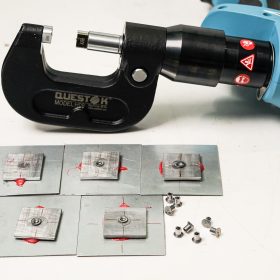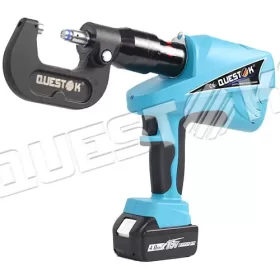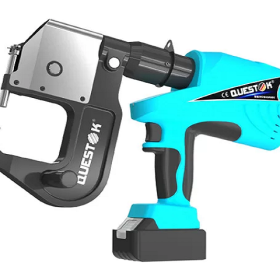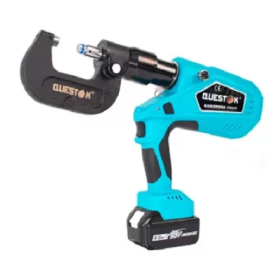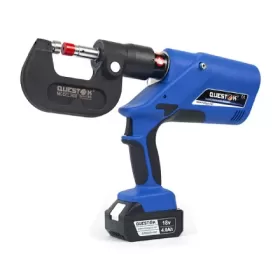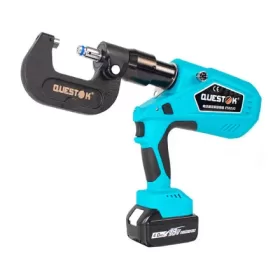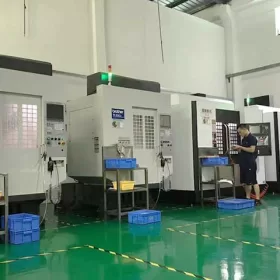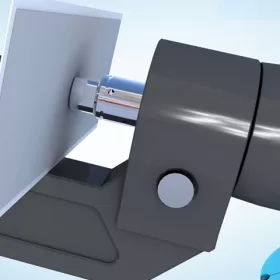Understanding Self-Piercing Riveter Technology and Mechanics
In the realm of metalworking and assembly, self-piercing riveting (SPR) technology has emerged as a revolutionary technique, offering unprecedented speed, efficiency, and reliability. To fully appreciate the significance of SPR, it is essential to delve into its intricate technology and mechanics. This article aims to provide a comprehensive exploration of Understanding Self-Piercing Riveter Technology and Mechanics, shedding light on its components, principles, and applications.
The Components of a Self-Piercing Riveter
The heart of an SPR system lies in its riveter, which consists of a piercing mandrel, a rivet head, and a clamping device. The piercing mandrel, typically made of hardened steel, is the key component that pierces through the workpiece materials, creating a hole for the rivet. The rivet head is responsible for forming the head of the rivet, ensuring a secure and durable joint. The clamping device holds the workpiece and the rivet in place during the riveting process, preventing movement and ensuring a consistent joint.
Principles of Self-Piercing Riveting
The mechanical process of SPR is a fascinating interplay of force and material deformation. As the riveter pierces through the workpiece, it exerts a tremendous force on the material, causing it to deform and flow around the piercing mandrel. Simultaneously, the rivet head is driven into the workpiece, further deforming the material and creating a flush or countersunk head. The rivet shank, which is the cylindrical part of the rivet, fills the hole created by the piercing mandrel, forming a tight and interlocking joint.
Applications of Self-Piercing Riveting
The versatility of SPR technology extends across various industries, including automotive, aerospace, construction, and electronics. In the automotive sector, SPR is used in the assembly of body panels, interior components, and structural parts, providing superior strength and rigidity while reducing weight and noise. In aerospace applications, SPR is crucial for joining lightweight and durable materials, ensuring the integrity of aircraft structures. In construction, SPR is employed in the fabrication of metal roofing, siding, and curtain walls, offering weathertight and aesthetically pleasing joints.
Advantages of Self-Piercing Riveting
Self-piercing riveting presents several advantages over conventional riveting techniques. Its ability to pierce through multiple layers of material eliminates the need for pre-drilled holes, significantly reducing production time and minimizing material waste. The process is fast and highly automated, allowing for high-volume production. Furthermore, SPR produces consistent and high-quality joints that are less prone to fatigue and vibration, enhancing the longevity and reliability of assembled products.
Conclusion
Understanding Self-Piercing Riveter Technology and Mechanics provides a solid foundation for harnessing the power of SPR in various metalworking applications. The intricate components, principles, and diverse applications of SPR technology demonstrate its potential to revolutionize the joining of materials, offering speed, efficiency, and reliability. As industries strive for innovative and sustainable production methods, SPR continues to emerge as a game-changing technology, paving the way for stronger, lighter, and more durable products.
- Company News
- Industry News
- Tag
- Tags
-
The Advantages of Questok Rivet Guns: Precision, Efficiency, and Durability
In industrial fastening applications, the choice of tools directly impacts productivity, safety, and long-term cost-effectiveness. Questok rivet guns have emerged as a standout solution for professionals across aerospace, automotive, and construction sectors. Combining advanced engineering with user-centric design, these tools deliver unmatched performance. Below are the key advantages that make Questok rivet guns a preferred choice:
-
Rivet Gun FAQ
Rivet Gun FAQ-SPR
-
Fast Assembly and Repair With Cordless Solid Rivet Gun
Questok cordless solid rivet gun stands out as a pivotal innovation, merging portability with power to facilitate efficient and effective fastening in a myriad of applications.
-
Redifine The Role of Self-piercing Riveting Gun Machine
Self-piercing riveting adopts high-speed mechanical fastening skill that joins thin sheet materials, typically steel and aluminum alloys.
-
The Latest Innovations in Clinching Tool Design
Explore the latest innovations in clinching tool design, redefining precision, efficiency, and versatility in material joining.
-
The Application and Maintenance of Self-Piercing Rivet Guns
Delve into the applications of self-piercing rivet guns in the automotive and aerospace industries and reveal the essential maintenance practices that ensure their accuracy and efficiency.
-
Rivetless Riveting Gun for Ventilation Duct Projects
The ventilation duct rivetless gun is a tool for riveting ventilation ducts without rivets.
-
Guide to Using Self-Piercing SPR Riveting Gun
In the automotive industry, self-piercing SPR (Self-Piercing Rivet) riveting guns are commonly used for joining metal components in vehicle bodies, including BMW vehicles.
-
Rivet Gun FAQ
Rivet Gun FAQ-SPR
-
Versatile Fastening- Applications of the Handheld Rivet Gun Across Industries
In the realm of fastening, the handheld rivet gun stands as a testament to ingenuity and versatility. Its ability to effortlessly join materials with sheer strength and permanence has revolutionized manufacturing and construction processes, leaving an enduring mark on diverse industries. Aerospace: Where precision and reliability are paramount, the rivet gun shines. In aircraft assembly, […]
-
Time-Saving Tools- Speeding Up Projects with Electric Blind Rivet Guns
In the whirlwind of project deadlines, every minute counts. But what if there was a tool that could dramatically reduce assembly time, giving you an edge in the race against the clock? Enter the electric blind rivet gun: your secret weapon for lightning-fast and effortless riveting. Electric blind rivet guns are the ultimate time-savers for […]
-
Streamlining Fastening- How an Electric Blind Rivet Gun Enhances Efficiency
Introduction In the realm of manufacturing and assembly, fastening plays a crucial role in securing components and ensuring structural integrity. Traditional manual rivet guns, while reliable, are often time-consuming and labor-intensive. The advent of electric blind rivet guns has revolutionized the fastening process, significantly enhancing efficiency and productivity. This article delves into the benefits of […]
-
The Role of Automation in Electric Rivetless Clinching
Electric rivetless clinching (ERC) is a lightweight joining process that eliminates the need for rivets or other fasteners. This can lead to significant cost savings and increased production efficiency. Automation plays a critical role in ERC, enabling high-speed and high-volume production. Automated Feed Systems Automated feed systems are used to accurately position the two workpieces […]
-
Why Choose a Universal Self-Piercing Riveting Gun for Your Projects?
In the realm of construction and fabrication, riveting guns stand as indispensable tools for creating secure and robust connections. Among the various types available, universal self-piercing riveting (SPR) guns have emerged as a game-changer due to their versatility and efficiency. This article will delve into the compelling reasons why choosing a universal self-piercing riveting gun […]
-
Why Choose Stainless Steel Hollow Rivets for Your Projects?
In the world of industrial manufacturing, choosing the right fasteners for your projects is crucial for ensuring longevity and reliability. Among the many options available, stainless steel hollow rivets stand out as a superior choice for a wide range of applications. This article delves into the compelling reasons why stainless steel hollow rivets are the […]
-
Top Trends in Electric Rivetless Clinching Guns
In the realm of fastening technology, electric rivetless clinching guns have emerged as a revolutionary solution for a wide range of industrial applications. These advanced tools offer several преимущества and capabilities, revolutionizing the way businesses approach their fastening needs. Adoption of Brushless Motors Brushless motors have gained significant traction in electric rivetless clinching guns due […]
